 | TODAY IN SCIENCE HISTORY NEWSLETTER - 20 MAY |
| Feature for Today |
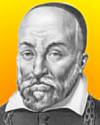 On 20 May 1537, Hieronymus Fabricius was born, an outstanding Renaissance anatomist who helped found modern embryology. On 20 May 1537, Hieronymus Fabricius was born, an outstanding Renaissance anatomist who helped found modern embryology.He published a book on the valves in veins, which influenced his pupil William Harvey to delve further into the circulation of blood. Fabricius studied the development of the chick embryo in the egg, and published two books on the subject. In all, he published over a dozen medical works, which were translated and reprinted long after his death. One curious piece was an essay on the language of brutes. For more on his productive life, read Biography of Hieronymus Fabricius, from Annals of Anatomy and Surgery (1880). |
| Book of the Day | |
| |
| Quotations for Today | |
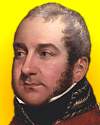 Congreve | "What opposite discoveries we have seen! (Signs of true genius, and of empty pockets.) One makes new noses, one a guillotine, One breaks your bones, one sets them in their sockets; But vaccination certainly has been A kind antithesis to Congreve's rockets, ..." |
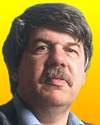 | "In science 'fact' can only mean 'confirmed to such a degree that it would be perverse to withhold provisional assent'. I suppose that apples might start to rise tomorrow, but the possibility does not merit equal time in physics classrooms." |
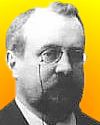 | "The number of hypotheses and theories about climate change are numerous. Quite naturally they have caught the public attention, as any proof of past climactic change points to the possibility of future climate change, which inevitably will have significant implications for global economics." |
| QUIZ | |
| Before you look at today's web page, see if you can answer some of these questions about the events that happened on this day. Some of the names are very familiar. Others will likely stump you. Tickle your curiosity with these questions, then check your answers on today's web page. | |
| Births | |
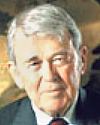 |  William Redington Hewlett, born 20 May 1913, was an American electrical engineer who co-founded a leading manufacturer computers, computer printers, and analytic and measuring equipment. In 1939, he formed a partnership with a Stanford classmate. Their first product was an audio oscillator. Eight were sold to Walt Disney for Fantasia. Lesser-known early products were: bowling alley foul-line indicator, automatic urinal flusher, weight-loss shock machine. The company's first "plant" was a small garage in Palo Alto, with $538 initial capital. William Redington Hewlett, born 20 May 1913, was an American electrical engineer who co-founded a leading manufacturer computers, computer printers, and analytic and measuring equipment. In 1939, he formed a partnership with a Stanford classmate. Their first product was an audio oscillator. Eight were sold to Walt Disney for Fantasia. Lesser-known early products were: bowling alley foul-line indicator, automatic urinal flusher, weight-loss shock machine. The company's first "plant" was a small garage in Palo Alto, with $538 initial capital. What is the name of the computer company he co-founded? What is the name of the computer company he co-founded? |
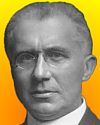 |  Emil Berliner, born 20 May 1851, was a German-born American inventor who made important contributions to telephone technology, but had a more familiar invention which displaced Edison's product. Emil Berliner, born 20 May 1851, was a German-born American inventor who made important contributions to telephone technology, but had a more familiar invention which displaced Edison's product. What was his invention? What was his invention? |
| Deaths | |
 |  Helen Brooke Taussig (1898-1986) was an American physician who was the founder of pediatric cardiology. She pioneered using X-rays and fluoroscopy to identify heart defects in newborns. In the 1940s, she and surgeon Alfred Blalock developed a surgical procedure for treating blue baby syndrome. In the early 1960s, Taussig was a major person in revealing and stopping the harm caused by a certain sedative drug which when taken by pregnant woman caused terrible deformations of their to newborn children. Helen Brooke Taussig (1898-1986) was an American physician who was the founder of pediatric cardiology. She pioneered using X-rays and fluoroscopy to identify heart defects in newborns. In the 1940s, she and surgeon Alfred Blalock developed a surgical procedure for treating blue baby syndrome. In the early 1960s, Taussig was a major person in revealing and stopping the harm caused by a certain sedative drug which when taken by pregnant woman caused terrible deformations of their to newborn children. What was this sedative drug? What was this sedative drug? |
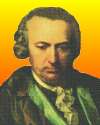 |  Charles Bonnet (1720-1793) was a Swiss naturalist and philosophical writer who discovered parthenogenesis (reproduction without fertilization) in certain life forms. Bonnet also demonstrated the regenerative ability of annelid worms, found that insects breathe through pores which he called stigmata, studied photosynthesis and epinasty in plants and noted the emission of bubbles by a submerged illuminated leaf. Charles Bonnet (1720-1793) was a Swiss naturalist and philosophical writer who discovered parthenogenesis (reproduction without fertilization) in certain life forms. Bonnet also demonstrated the regenerative ability of annelid worms, found that insects breathe through pores which he called stigmata, studied photosynthesis and epinasty in plants and noted the emission of bubbles by a submerged illuminated leaf. In what life form did he discover parthenogenesis? In what life form did he discover parthenogenesis? |
| Events | |
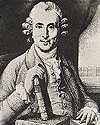 |  On 20 May 1747, an experiment to remedy an illness found among sailors was begun by a British ship's surgeon, James Lind, on the HMS Salisbury. He regulated the diets of the sailors, and especially included lemons and oranges. Positive results quickly showed that the illness, and the huge numbers of deaths, could be easily remedied in this way. On 20 May 1747, an experiment to remedy an illness found among sailors was begun by a British ship's surgeon, James Lind, on the HMS Salisbury. He regulated the diets of the sailors, and especially included lemons and oranges. Positive results quickly showed that the illness, and the huge numbers of deaths, could be easily remedied in this way. What was the illness? What was the illness? |
 |  On 20 May 1932, a female pilot took off for Ireland from Habor Grace, Newfoundland, to become the first woman to fly solo across the Atlantic Ocean. She later landed her plane in Ireland after a thirteen-hour, thirty-minute flight from Canada. On 20 May 1932, a female pilot took off for Ireland from Habor Grace, Newfoundland, to become the first woman to fly solo across the Atlantic Ocean. She later landed her plane in Ireland after a thirteen-hour, thirty-minute flight from Canada. What is the name of this woman? What is the name of this woman? |
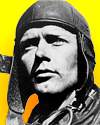 |  On 20 May 1927, at 7:40 a.m., a male pilot took off from Roosevelt Field in Long Island, N.Y., in a monoplane on his historic first solo flight across the Atlantic Ocean. He arrived in France thirty-three and one-half hours later. On 20 May 1927, at 7:40 a.m., a male pilot took off from Roosevelt Field in Long Island, N.Y., in a monoplane on his historic first solo flight across the Atlantic Ocean. He arrived in France thirty-three and one-half hours later. What is the name of this man? What is the name of this man? |
| Answers |
When you have your answers ready to all the questions above, you'll find all the information to check them, and more, on the May 20 web page of Today in Science History. Or, try this link first for just the brief answers. Fast answers for the previous newsletter for May 19: haemoglobin; taxidermic method for mounting museum displays to show animals in their natural surroundings; seafloor spreading (a term he coined) along the mid-ocean ridges; T(homas) E(dward) Lawrence, "Lawrence of Arabia"; an animal or human head; Halley's Comet; carborundum. |
| Feedback |
 If you enjoy this newsletter, the website, or wish to offer encouragement or ideas, please send feedback by using your mail reader Reply button. If you enjoy this newsletter, the website, or wish to offer encouragement or ideas, please send feedback by using your mail reader Reply button. |
--
If you do not want to receive any more newsletters, Unsubscribe
To update your preferences and to unsubscribe visit this link


Δεν υπάρχουν σχόλια:
Δημοσίευση σχολίου